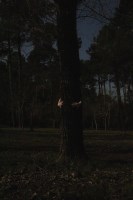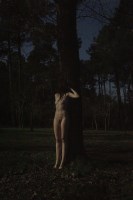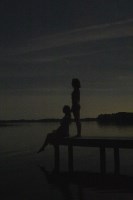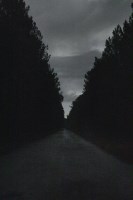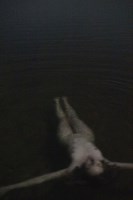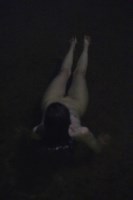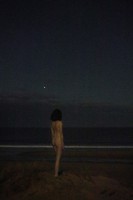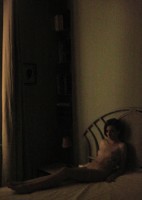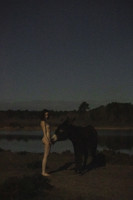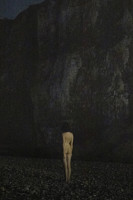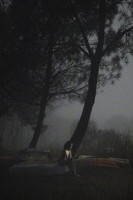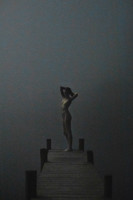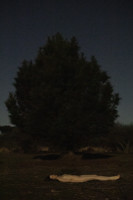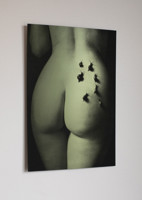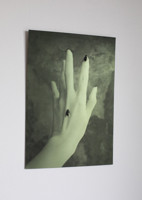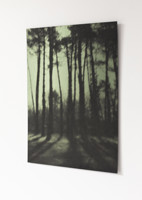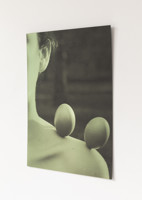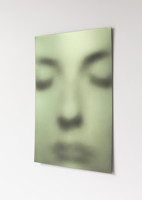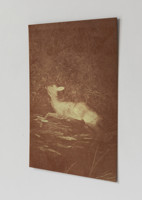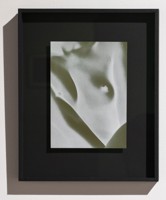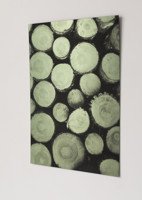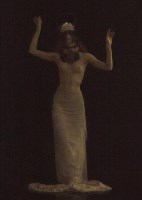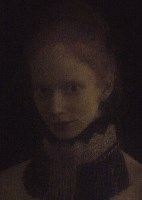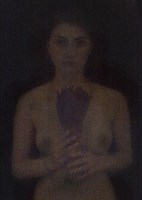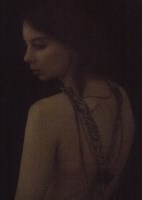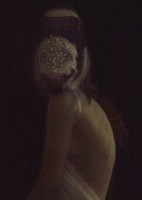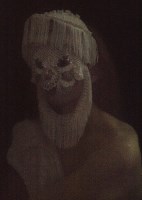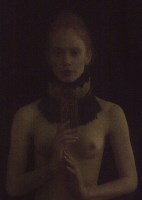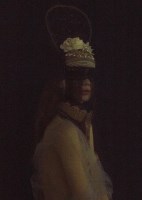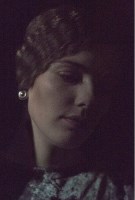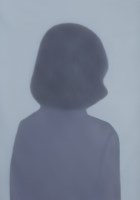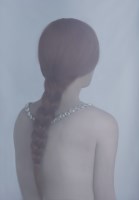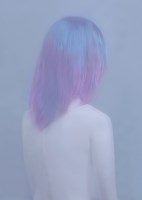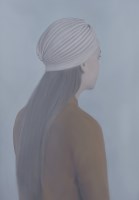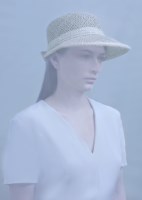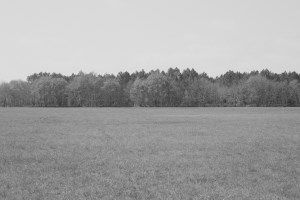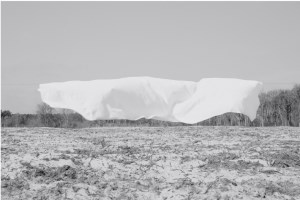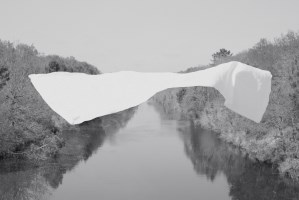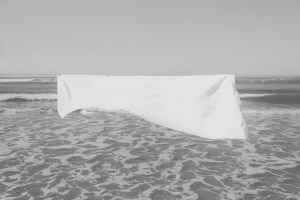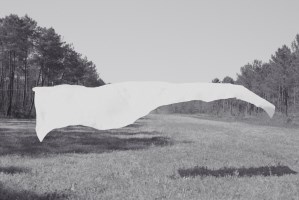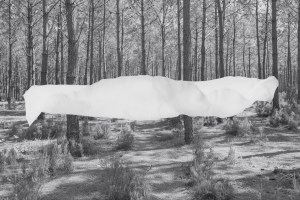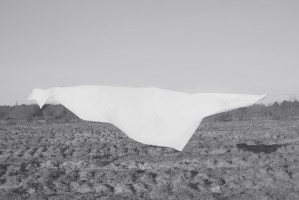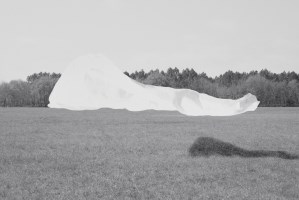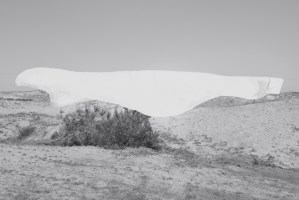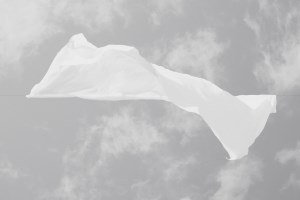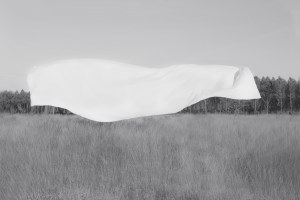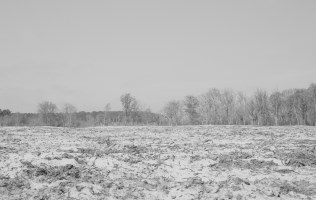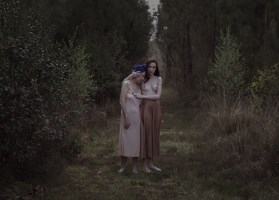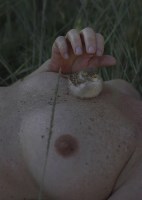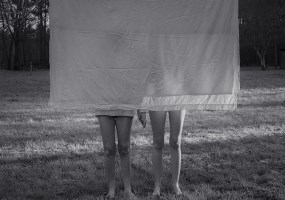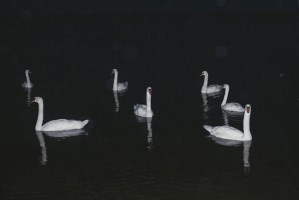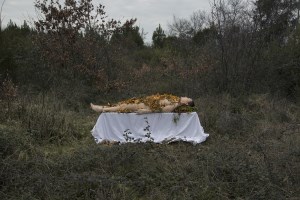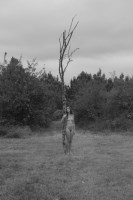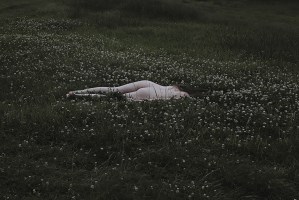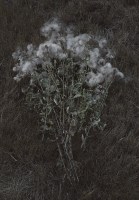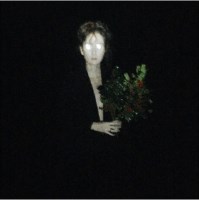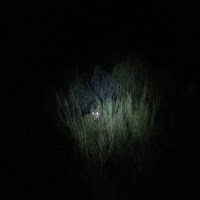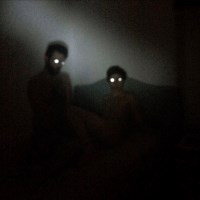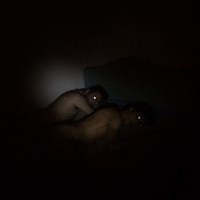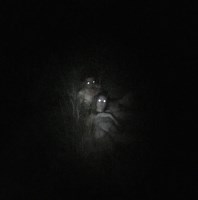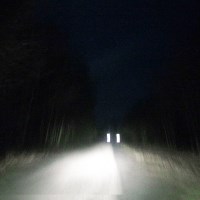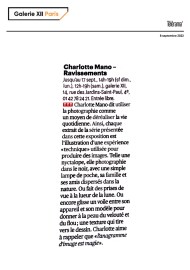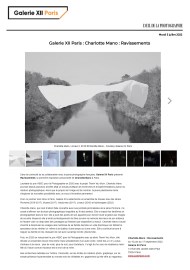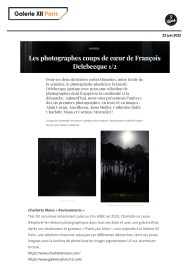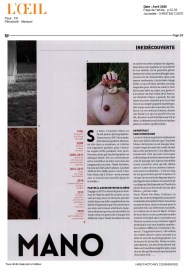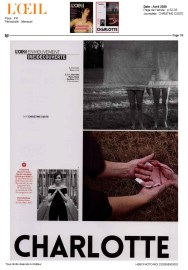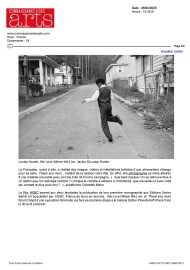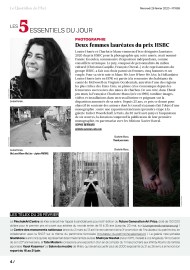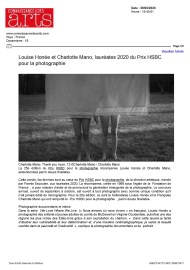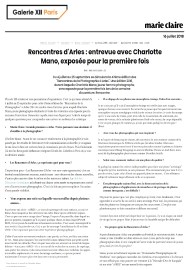Charlotte Mano
-
Selected Works
Mythologies (2022-2024)
With Mythologies, Mano comes back to her search on the limits of the photographic media. The images -self portraits- are made at night, with the only light of the full moon. One image every full moon. Again in the same landscapes but alone. There she reveals a state of ecstasy, a back to self, a call to calm. As always with Mano, there’s a kind of silence, a melancholy grace. On a technical point of view, the images – very grainy due to the lack of light – are directly printed with UV on an aluminum plate
Fétiche (2024)
"Fétiches" are like amulets, small precious objects through which the artist presents herself, in a perpetual ode to nature.
Each engraving is unique. Charlotte Mano brings them to life in her studio and endows them with the virtues of protection and good luck. It's not crazy to ask each "Fetish" for a miracle, and the photographer has no trouble convincing us of their powers.
As always with the artist, her work unfolds as a hypersensitive experiment in the photographic medium. Like a sorcerer, she carries us into an intimate, silent, phantasmagorical universe, straight out of childhood’s garden.
Muses ou peinture mais en fait non
At night, in the blur of pixels, bodies still exist but their manifestation seems altered, uncertain, at the limit of loss. By going against the very definition of photography «writing with light», Charlotte Mano experiments a new form of vision and invites the spectator to let go of a literal interpretation of her images. The materials mingle and respond so well that one gets lost in the body, the night, the image.
Thus we enter into a sensual relation to the image: the constraint of the visibility forces us to «decipher» the other, to «see» it, in its fragile presence. These pixels, which become the visible DNA of the image, confuse the viewer: Painting? Pointillism? Image 3.0?
However, the artist does not intend to deceive us. By modifying the technical capabilities of her digital camera, Mano was able to capture the very essence of the image. The choice of making an UV print on brushed aluminum ends up focusing the language of the artist in photographic exploration, both from a formal and conceptual point of view.
Portraire
In her series entitled “Portraire”, Charlotte Mano questions the image and its power of representation. Bluish images, vaporous bodies, the subjects seem frozen, as if the image was gently striking them with an irremediable sensation of artificiality. She keeps experimenting on the image as a veil. Applied to the representation of the face, this approach proves to be relevant - even disturbing: the image takes on the appearance of painting in its form and as a final work. In this series, Charlotte Mano is at the crossroads of several influences: art, fashion, painting, she gently breaks down borders thanks to a contemporary look at the fashion figure. Her photograph become a medium of derealization: the image is not a repository of any truth.
Linceul
An attempt to symbolically make the places of her childhood survive by flying a sheet in landscapes that eventually disappear.
Thank You Mum
The Italian neurobiologist, Giacomo Rizzolatti, and his colleagues announced the discovery of mirror neurons in 1996. The analysis of their functioning revealed how they are implicated in the behaviors of imitation and emulation which permit the brain to adopt another person’s point of view while also allowing the subject to socialize and to learn about their environment. These neurons, responsible for human empathy, are particularly active during childhood and they explain why a baby will start to cry when they see another one crying.
The allegoric use of mirror neurons to analyze certain aspects of the composition of photography’s DNA open a symbolic space which, in my opinion, explains the irresistible empathetic power of certain photographs. The images collaborate with the process of understanding the world and activate our synchrony with another person’s subjectivity which echoes our own emotions and experiences. They contribute to put an ethical distance between the subject and their own life allowing us to go spontaneously from an individual self to a collective “we” without the mediation of a judgement.
A large number of the images created by Charlotte Mano for her series Thank you Mum originate from this amniotic space that precedes creation. The drawing she made as a child of her mother is a poignant, radiant illustration of what is not visible or of what is not yet visible. That’s why, perhaps, the images in this series do not form a linear narrative. They are created and ordered in the manner poets arrange words in their poems. They ignore standard syntax to free words of their referents and meanings to acquire multiple semantic and expressive potentialities.
The pain of loss and the anxiety in front of the irreversible – emotional epicenters of this work - coexist in this universe of entropy that brings us together with the most primal love, joining us to the one who gave us life. It is impossible to deploy these photographs, to put these emotional flashes in a chronological order. Like memories, they don’t follow a clear temporal line. Charlotte Mano illustrates in a deliberate ambiguity these undetermined spaces that place the present in a timeless domain and constitute the multidimensional temporality of memory: an echo from the past that can still be heard in the present.
Her images are rich in echoes, reverberations and rituals whose morphology opens on the transvisible 1, a concept that represents the interstitial passage between the invisible and the visible, between what we know and what we don’t know, between what we desire and what we fear. Profoundly distanced from the verbal, this is an area we all share through painful emotional experiences or when we are within their proximity, both scrutinize the unfathomable obscurity of suffering. But we manage to get by. And we come back to life. However, in that interval, we need to take a break and to be grateful. That’s what makes rituals so efficient, in particular, those we know intuitively. They let us carry out intelligent acts without using our rational intelligence. That’s how Charlotte Mano works, joining all the women who taught us how to give up our reticence and let the essence of our feelings flow. The judgement we cast on the aesthetic aspects of her work has no importance. It is the deep honesty of the process that is truly important.
Text from Alejandro Castellote
Nocturnes
"There are several ways to approach this series. One of the possible readings would be about the artifacts put in place to realize it and which are intended to resemble a kind of science, archaic or modern: that of the capture, with a strange and why not perfected device, it is a question of surprising these humans nyctalopes, specimen never met until then. So I invite my «viewer» to a story of the expectation which we will assume here that the central figure has more to do with the scout than with the hunter. To imagine a story and to be interested in the speculative dimension of an image is a central question of my work, the characters become beyond their own presence, the clues of an underlying story: fable, science fiction."
-
Biography
Biography
France , 1990 -
Charlotte Mano was born in 1990 in a small seaside town in the South-west of France. After a double cursus in Modern Letters and Cultural Communication, Charlotte joins the prestigious Ecole des Gobelins in Paris from which she graduates with honors. Her work draws from a range of influences: from the fantastic literature of the nineteenth century to contemporary painters like Djamel Tatah or Zhang Xiaogang or even to plastician artists like Oscar Muñoz. Her photographic work, if it unfolds in appearance around several themes (the body, the space, the darkness), does not cease to question the image: its power of representation and transparency, but also its own limits. She had her first solo exhibition at the Chateau d'Eau in Toulouse in 2018 and has been recognized since as one of the most significant emerging French artists photographers.
EXHIBITIONS
- 2023 : solo show Art 22, Brussels
- 2023 : Moderne Art Fair, Paris
- 2022 : Duo Show Jeune Création, Romainville, France
- 2021 : Thank You Mum, Rencontres d'Arles (prix HSBC)
- 2021 : Thank You Mum, Cité musicale de Metz, sept-nov.
- 2021 : Solo Show, Art22, Brussels
- 2020 : Athens Photography Festival, Greece
2019 Imaginaires Photographies, Art22 Gallery, Brussels
2019 Solo show, Galerie du Château d'Eau, Toulouse
2018 Organvida Festival, Zagreb
2018 Athens Foto Festival, Athens
2018 Parallel photo platform Editions Cosmos, Les Rencontres d'Arles, Arles
2018 Triennal of Photography, Hamburg
2018 Galerie Bertrand Grimont, Paris
2018 Derby Quad Format Festival, Derby, UK
2018 Maison de la Photographie, Lille
2018 Festival of Young European Photography, Circulation(s), 104, Paris
2018 La Bourse du Talent, Jury Special Prize, BnF, Paris
2017 Les Grandes Rencontres, Salon de la Photo, Paris
2017 Les Rencontres Photographiques du 10ème, Mairie du 10ème, Paris
2017 International Photo Festival, Cadaquès, Spain
2017 Atelier Gaston de Luppé, Les Rencontres d'Arles, Arles
2017 Hatsh Young Talents, Espace Commines, Paris
2017 Festival Les Photographiques, Le Mans
2016 Kampala Art Biennale, Ouganda
2016 Handicap en Milieu Professionnel, Hôtel Potocki, Paris
2016 Le Club des AD, Les Rencontres d'Arles, Arles
2016 Promenades Photographiques de Vendôme, Paris
2016 Atout France, Russie, France, Japon
2016 Anne Valérie Hash, Musée de la Dentelle, Calais
2016 Petites Cités de Caractère, Sarthe, Le Mans
2014 Galerie le Lac Gelé, Nîmes
2014 Animalités, Espace Boris Vian, Montpellier
2014 Carré d'Art, Musée d'Art Contemporain, Nîmes
MUSEUM COLLECTIONS
Musée Français de la Photographie
Artothèque d'Annecy
BNF, Bibliothèque Nationale de France
Pôle photographique, le Château d'Eau, Toulouse
PRIZES AND DISTINCTIONS
2018 Finalist, BMW Prize
2017 Bourse du talent, Special Jury Award
2016 Shortlist Lensculture
2016 Shortlist La Convocation
2016 Shortlist Fine Art Grant Photography -
Exhibitions
Exhibitions and Fairs
2025 | Collective show, REVE! | Campredon Art & Images, l'Isle-sur-la Sorgue, France
2023 | Moderne Art Fair 2023 | Paris, avenue des Champs-Elysées. Stand 229
2023 | PHOTO LONDON 2023 | Somerset House - South Building, Strand, London WC2R 1LA
2022 | Moderne Art Fair 2022 | Place de l'Etoile - 10, Avenue de la Grande Armée, Paris 75017
2022 | Photo Basel 2022 | Volkshaus Basel, Rebgasse 12, CH - 4058 Basel, Switzerland
2022 | Thank You Mum | Gallery XII Paris
2022 | Ravissements, 2022 | Galerie XII Paris
2021 | MIA Fair 2021 | Via Moncucco 35, 20124 Milano
2020 | Art Paris Art Fair | Grand Palais, Paris - Booth D13
2020 | 3 women. 3 generations . 3 perspectives | Galerie XII Paris
-
Press
-
Bibliography

